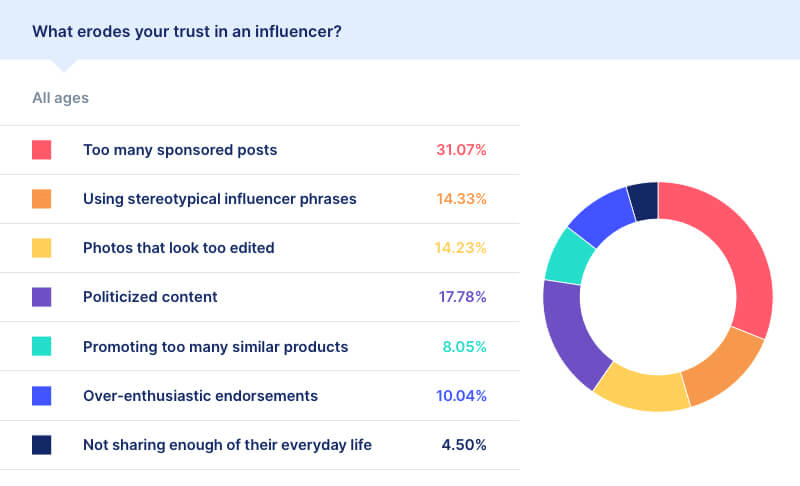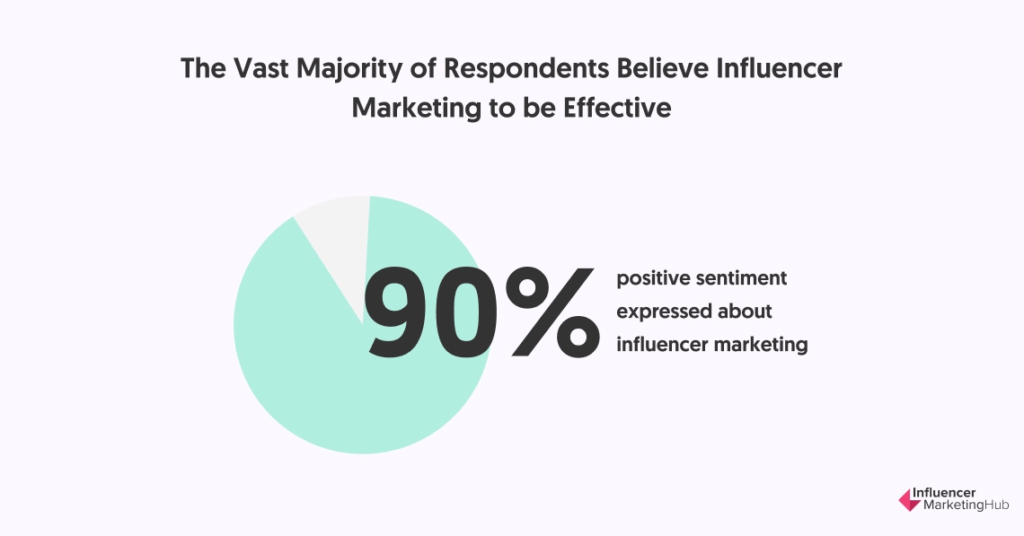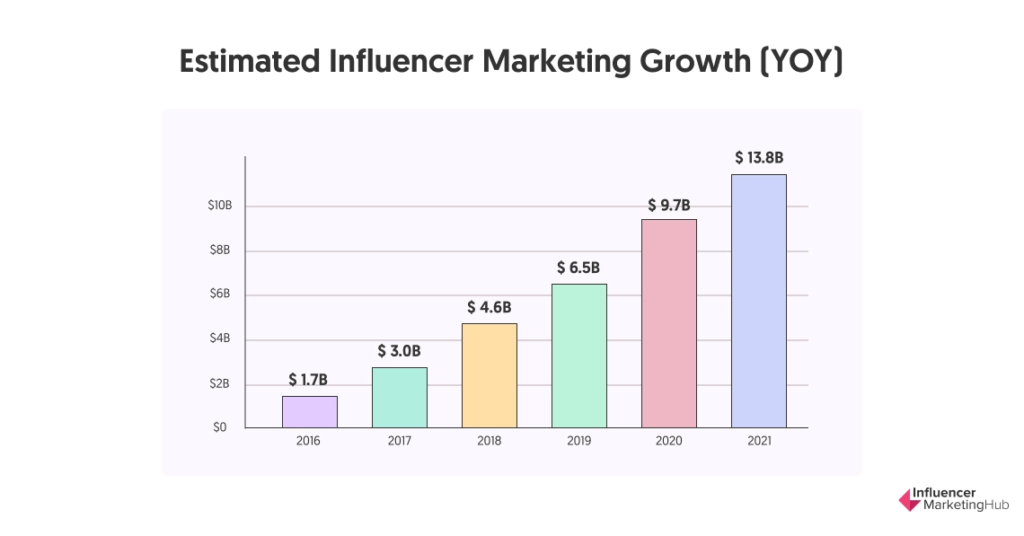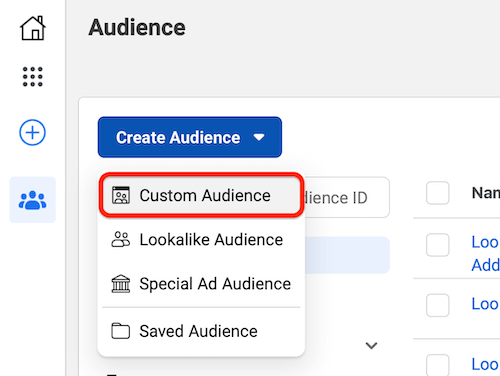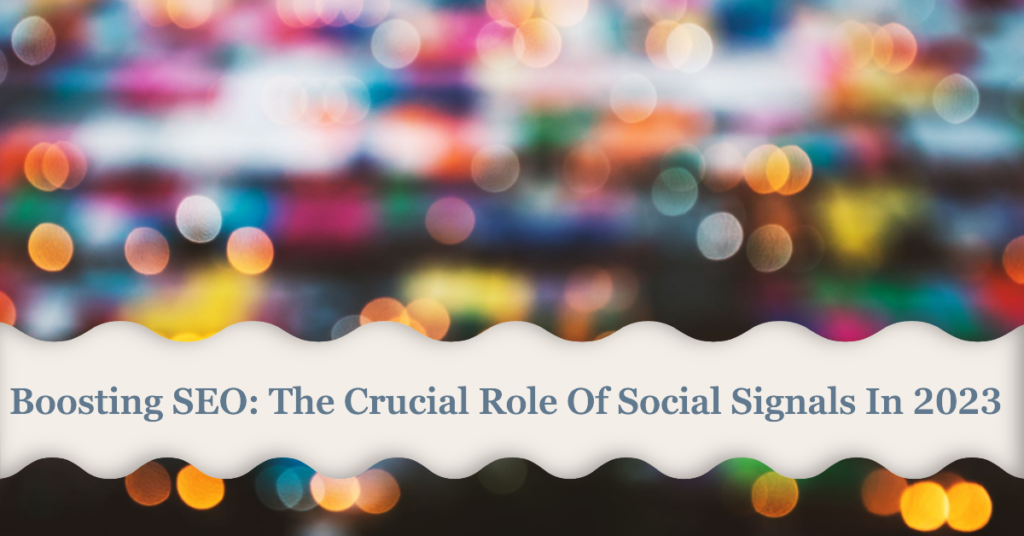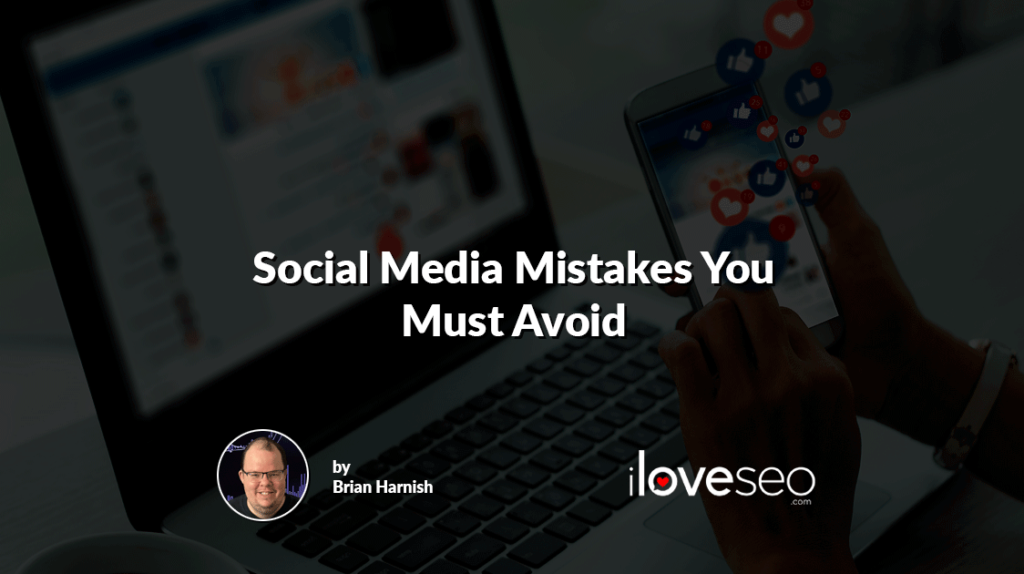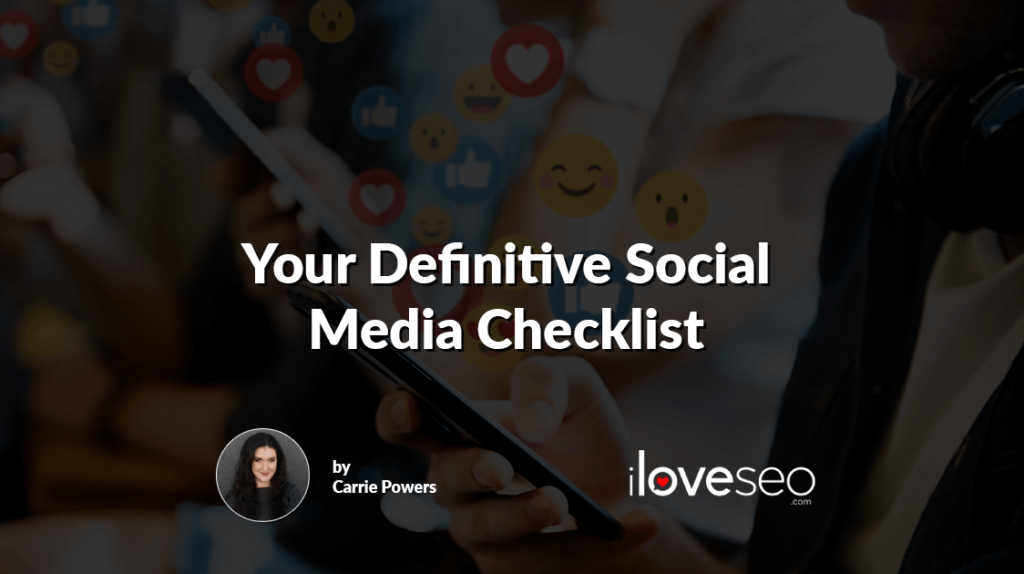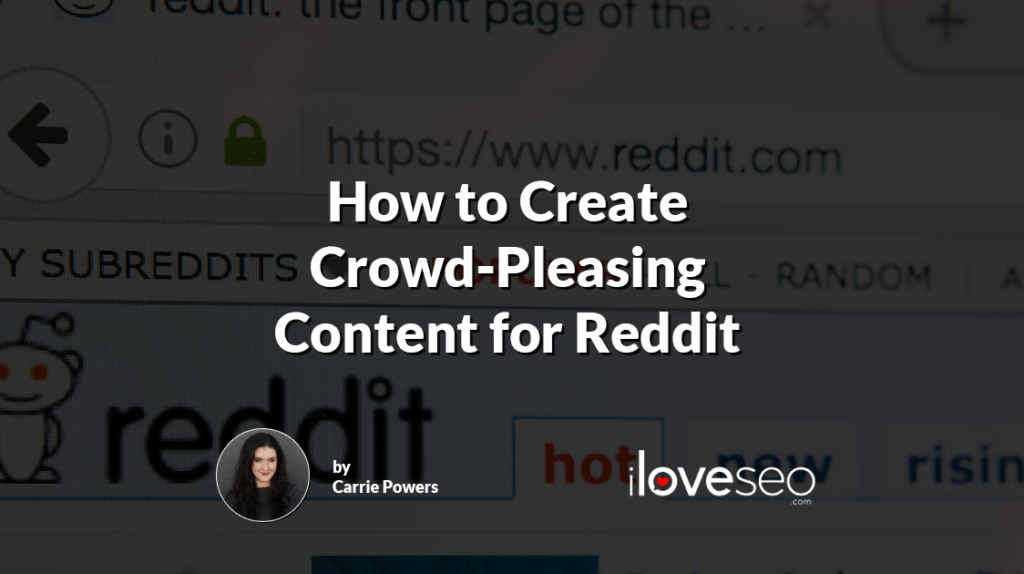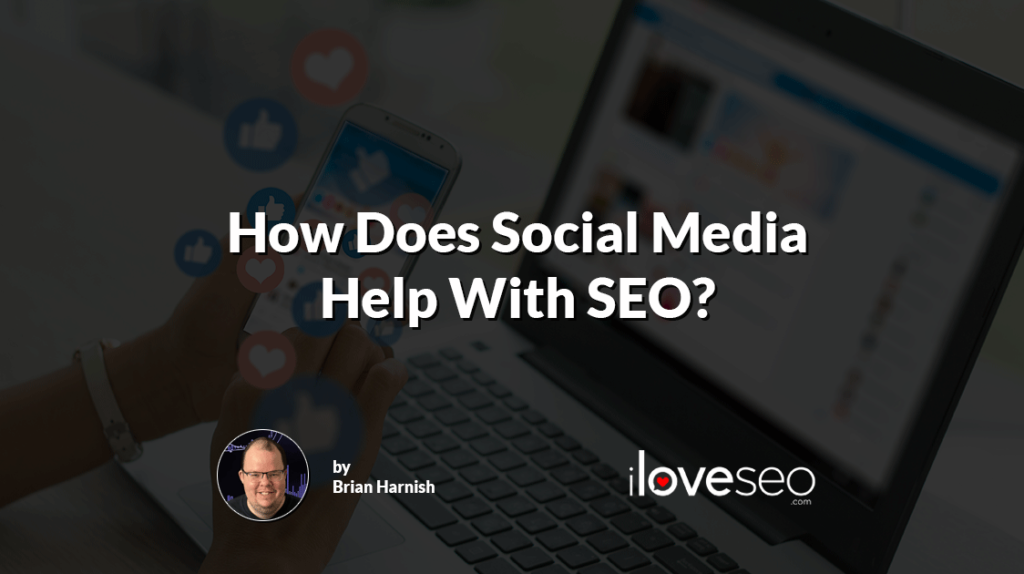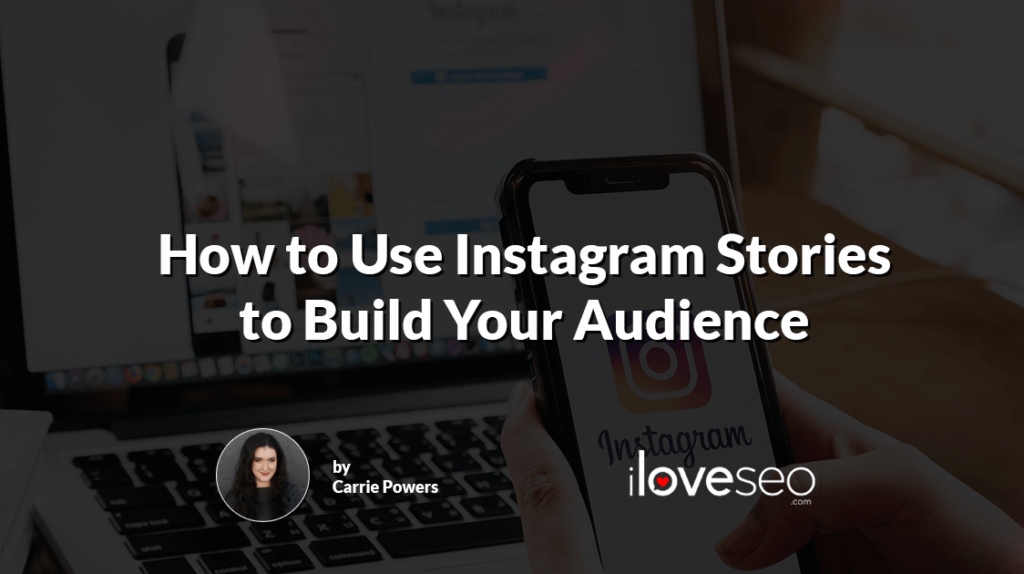Influencer amplification may not be a widely-known concept (yet), but it’s a link building tool worth adding to your arsenal.
Here, we’ll explain what influencer amplification is, why it works and how you can use it to grow your backlink portfolio.
- Do Consumers Trust Influencers?
- What Is Influencer Amplification?
- How Influencer Amplification Can Expand Your Link Portfolio
Do Consumers Trust Influencers?
If you’ve ever seen a Kardashian peddling a product (and who among us hasn’t?) then you’re already familiar with the most well-known aspect of influencer marketing. But it’s important to know that the most effective type of influencer marketing doesn’t involve celebrity endorsements or dubious dietary supplements.
Rather, truly powerful influencer marketing involves public figures who are actually, well, influential. For instance, a tech reviewer whose viewers rely on them to give honest feedback about the latest smartphones, or a skilled makeup artist who’s known for having all the best product recommendations.
Those are the types of people who have genuine influence, and those are the influencers who people listen to and trust. Just how much faith do people have in influencers’ opinions? One survey found that 61 percent of consumers are likely to trust recommendations from a friend, family member, or influencer on social media. By comparison, only 38 percent are likely to trust recommendations from brands.
That’s especially true for consumers aged 18–29, with 66 percent trusting friends, family, and influencers over brands. (Sixty-one percent of people aged 30–44, 60 percent of people aged 45–60, and 53 percent of people over 60 feel the same.)
In that same vein, Edelman’s 2019 Trust Barometer report found that because of an influencer’s content, many consumers are very likely to take concrete actions. After listening to what influencers had to say about a product or brand:
- 58 percent of customers purchased a product;
- 40 percent trusted the brand; and
- 33 percent talked about the brand to other people.
Unsurprisingly, the more honest an influencer is about specific products, the more likely their audience is to view them as being authentic. According to a survey from SlickText, unbiased reviews are the type of content most likely to earn consumers’ trust. Follower interactions come in second, and insights into influencers’ personal lives aren’t far behind:
On the other hand, certain types of content can lead an audience to believe that influencers are less trustworthy. Specifically, an excessive amount of sponsored posts (cited by 31 percent of consumers), as well as politicized content (cited by almost 18 percent):
But regardless of the types of content that lead consumers to be less trusting, the truth is that many people will listen to the thoughts and opinions of their favorite influencers.
That’s an established fact that nearly all marketers and brands already know to be valid: As a 2021 report from Influencer Marketing Hub discovered, 90 percent of respondents believe influencer marketing to be an effective form of marketing:
As a result, influencer marketing has an estimated overall value of $13.8 billion in 2021. That’s more than an eightfold increase since 2016:
With those statistics in mind, we think it’s safe to say that influencer marketing is viewed as being valuable and authentic by both consumers and marketers alike. And most importantly, plenty of people genuinely trust influencers and their recommendations.
What Is Influencer Amplification?
So consumers trust influencers, and professionals from a variety of backgrounds recognize the value of influencer marketing. But we’re not here to talk about influencer marketing in general—instead, we’re here to talk about influencer amplification specifically.
To clarify, influencer amplification is an aspect of influencer marketing, but the two are not synonymous. Here’s how we define the difference:
- When you hire an influencer to promote your brand, products, or services through the use of custom-created content, that qualifies as influencer marketing.
- When you repurpose that content to extract as much value and impact as possible, all while increasing its reach to the audience you and the influencer share, that qualifies as influencer amplification.
But what exactly does influencer amplification entail? As the team at Upfluence explained, it can include multiple elements which all feed into each other. For instance, brand awareness, user reviews, lead generation, and social proof:
For many brands, one of the most attractive aspects of influencer amplification is its cost effectiveness. After all, why pay for multiple influencer marketing campaigns when you could simply extract more value out of one?
That’s the question that leads SEO professionals to see the benefits of influencer amplification. It’s not just about paying an influencer to create a handful of posts—it’s about using those posts to collect insights, gain exposure, continue connecting with a new audience, and create fresh ad campaigns that target your ideal customers.
How Influencer Amplification Can Expand Your Link Portfolio
Having a general understanding of what influencer amplification entails is one thing, but actually executing it is another.
Before you start working on influencer amplification, though, you first need to implement an influencer marketing campaign. To find influencers who might be a good fit for your brand, explore social media, and start connecting with those who are active in your niche. Which one you ultimately do business with is up to you.
Once your influencer marketing campaign is up and running, you’d be smart to begin using influencer amplification by identifying the audience that you and your chosen influencer share.
As Social Media Examiner demonstrates, one easy way to accomplish this is with Facebook’s Ads Manager.
There, the influencer you’re working with simply needs to create a custom audience with the proper parameters:
For instance, they can select every user who has engaged with their account within a given time period. Then, they can use the Share a Custom Audience feature to share the audience with you.
Note that you and your influencer can create custom audiences on other platforms too, including Twitter Ads and Google Ads, so you’re not just limited to Facebook and its properties.
From that point on, the rest of the process is straightforward: Set up an ad campaign, target the custom audience your influencer has identified and let your new customers come to you.
However, as any good SEO practitioner knows, there are always additional steps you can take to maximize your results. In the case of influencer amplification, these include:
- Customizing your content: It only makes sense to tailor your ad campaign’s content to the custom audience your influencer has shared. So before publishing anything, be sure to thoroughly analyze the audience’s demographics and interests so you can tweak your content accordingly.
- Choosing the right platform: Depending on where your brand gets the most engagement, influencer amplification may serve you far better on one platform than another. Or if your brand is under-utilizing one platform, you could implement influencer amplification there to start building a new audience.
- Treating influencers well: The Upfluence study cited above found that the most common form of influencer payment is free product samples. While this might work for smaller influencers, be sure to treat all the influencers you’re working with fairly. This is especially true if you’re asking them to do the extra work of identifying a custom audience.
- Maintaining your influencer relationships: This goes hand-in-hand with paying influencers a fair wage—since influencer amplification requires some additional effort on the influencer’s part, you should always strive to maintain positive relationships with those you work with.
- Repurposing old content: If you’re under the impression that influencer amplification requires creating all-new content, you’ll be relieved to know that the most efficient influencer amplification campaigns involve repurposing old content to suit your custom audience’s needs.
- Measuring your ROI: Influencer Marketing Hub’s study found that 33 percent of firms don’t measure the return on investment (ROI) of the influencer marketing campaigns. But because ROI measurement can paint an incomparably clear picture of a campaign’s success (or lack thereof), we strongly recommend that you always measure the ROI of your influencer marketing and amplification efforts.
But where does link building come into all this? Well, everywhere! Because influencer amplification involves promoting influencer-created content on social media and targeting a specific audience, it naturally creates a wealth of opportunities for users to talk about, share and link to your site, 100 percent organically.
And to increase the number of links you get, you can go beyond paid social ads by amplifying your content via email marketing and on-page SEO. By doing so, you’ll be able to use your influencer amplification efforts to earn links from as many sources as possible.
Use Influencer Amplification to Build Links and Maximize Marketing Spend
Because influencer amplification can effectively place your site and brand in front of an ideal audience, it’s easy to see why it has such impressive link building potential. But an additional benefit is its cost-effectiveness: Rather than paying for an entirely new influencer campaign, you can simply use the content you already have.
So for SEO practitioners and marketing pros alike, influencer amplification is the perfect way to build links and make marketing dollars go further.
Image credits
SlickText / June 2021
Influencer Marketing Hub / August 2021
Screenshots by author / December 2021
Social Media Examiner / November 2020


